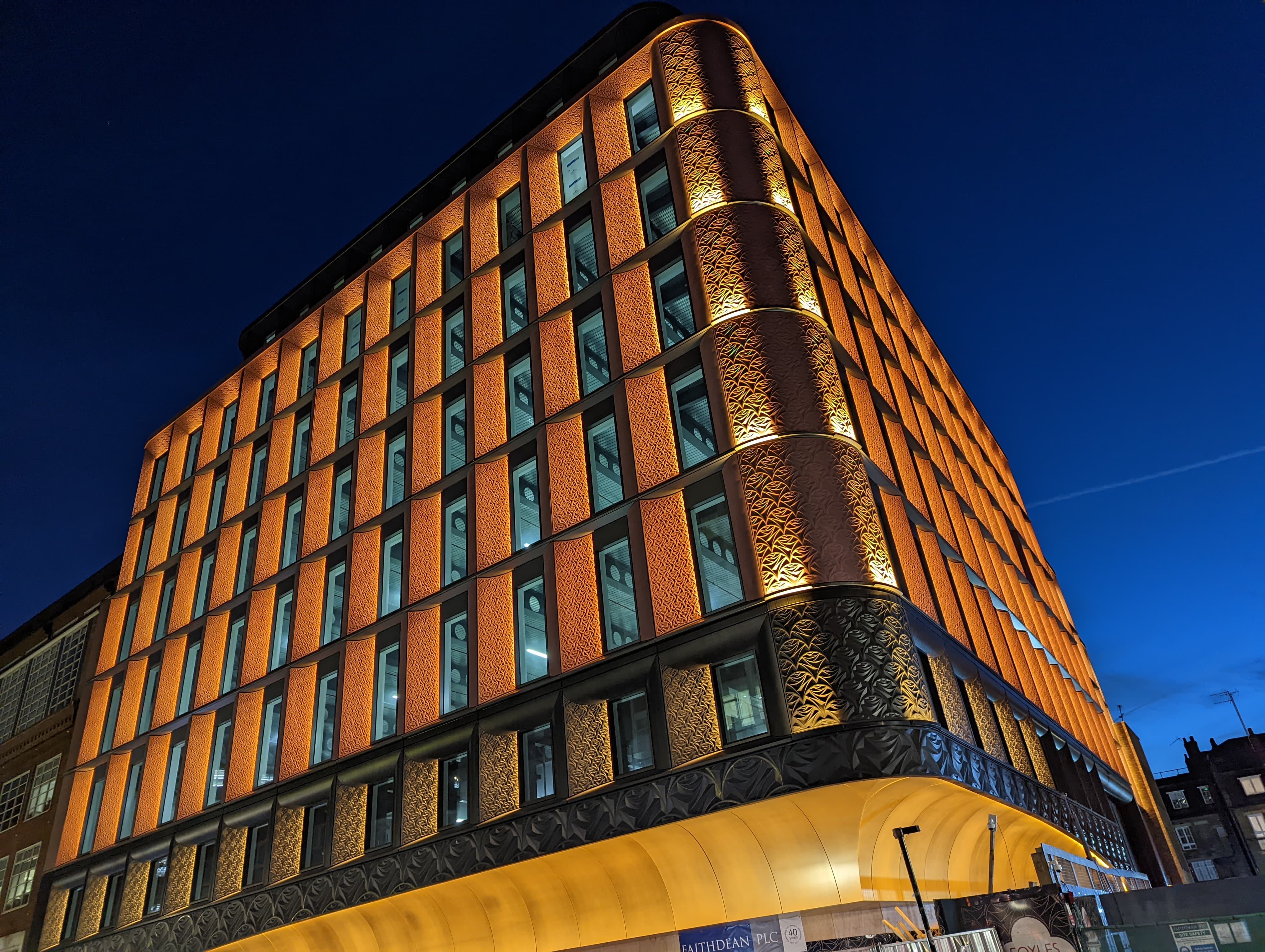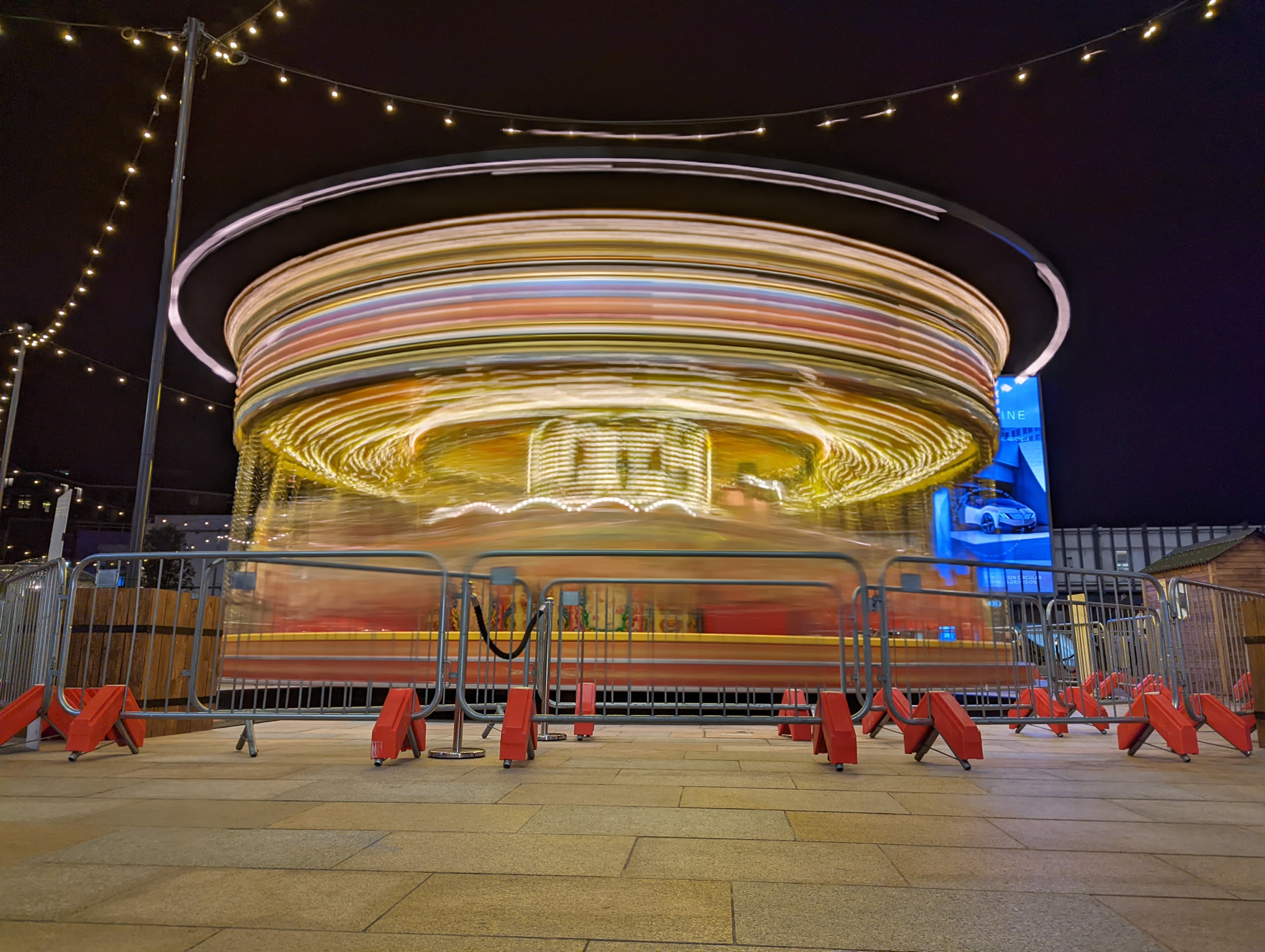Google devices have led the way in computational photography for a number of years now. Reluctant to adopt multi-camera systems for a number of years, Pixel’s popularity among photographers proved empathically that camera software was every bit as important as camera hardware. But as the competition was beginning to pull away in terms of both software and hardware, it was time for the Google Pixel team to step up to the challenge of putting out a genuine Flagship Smartphone contender. With the Pixel 6 Pro, Google has answered many of the criticisms of last generation’s Pixel 5-series devices. Although the Pixel 5 performed decently, it lacked the RAW power, specs and frankly the class that many people were hoping for.
Entering a world with semi-conductor shortages playing havoc with gadget release and development cycles, Google had the foresight to shift away from Qualcomm’s popular Snapdragon processor platform and develop its own for the Pixel 6. The logic of bringing chip development in-house is intended to deliver the slickest Android mobile experience available on any device. As well as ringing in significant improvements in power management and overall device performance. Facing stiff competition from rival devices in the form of Samsung’s Galaxy S21 Ultra, Xiaomi Mi 11 Ultra, OnePlus 9 Pro and of course, the iPhone 13 Pro, let’s dive in and see how well Pixel 6 Pro performs as a smartphone for photography lovers.
Pixel 6 Pro At a Glance
- From £849 body only 12GB/128GB model
- 50MP Octa PDAF Quad Bayer wide camera, 1/1.31-inch sensor, f/1.85 aperture
- 12MP ultrawide camera, 1/2.9-inch sensor, f/2.2 aperture
- 48MP telephoto camera, 1/2-inch sensor, f/3.5 aperture, 4x optical zoom
- 6.7-inch (170 mm1) display, 19.5:9 aspect ratio, QHD+ (1440 x 3120) OLED at 512ppi, upto 120Hz
- Operating System – Android 12
- Processor – Google Tensor, 12GB RAM/128GB
Google Pixel 6 Pro – Hardware and Design
Starting at a competitive $899/£849, the Pixel 6 Pro comes in three storage options; 128GB, 256GB and 512GB. There’s no expandable storage here unfortunately. All models harness the power of Google’s in-house developed Tensor 5nm process chipset, bolstered with 12GB LPDDR5 RAM. It has a non-removable 5,003mAh battery, supported by 30W wired charging and 23W wireless charging. The display of the Pixel 6 Pro is a bright 6.7-inch QHD+ (1440 x 3120) AMOLED panel, with a 120Hz refresh rate and an impressive pixel density of 521ppi. Comparatively, the top spec iPhone 13 Pro Max, matches the Pixel 6 Pro for display size, but its 458ppi resolution looks humble in comparison.
The curved glass of the Pixel 6 Pro’s display will undoubtedly split opinion. Particularly since Apple began to nudge the general trend back towards flat-edged displays with the iPhone. Samsung and Google’s flagships stick with curved edges that smoothly roll off into the frame of their top tier devices. The look is sleek, but it does lead to some shadowing in the edges, slight colour shifting as you angle the device and the occasional input mishap. However, the display remains one of the most attractive I’ve used on any device. Text, images and videos are all rendered with a refreshing richness and clarity that is hard to beat.
Another area of a potential clash in taste is the Pixel 6 and 6 Pro’s statement camera array. The Pixel 6 Pro features a triple camera setup, which is housed in a broad black bar intersecting a two toned glass back panel. The look is reminiscent of Thomas Bangalter’s iconic silver Helmet that he wore as the taller member of Daft Punk. It’s a bold approach that calls back to the Google Nexus 6P and sets the Pixel 6-series apart from the competition.
The whole device is encased in Gorilla Glass Victus, the toughest glass available on an Android device – front and back – with an aluminium frame. There are three colours available at launch, Stormy Black (Black/Grey), Sorta Sunny (Gold/Peach) and Cloudy White (White/Silver). Whichever colour you go for, the Pixel 6 Pro looks and feels premium, which is a marked step up for the Google Pixel device family. I recommend investing in a case however as the glossy finish of these devices make them prone to slipping from hands and smooth surfaces.
On paper, the power and build quality requirements for this device to be considered a flagship are well and truly satisfied.
Google Pixel 6 Pro – Camera and Performance
Each year, Pixel devices are widely regarded as delivering some of the most impressive photo capabilities on any smart device. This year is no exception. Having compared this device directly with the iPhone 13 Pro Max, courtesy of a loan from Vodafone, I can confidently say this device offers class-leading camera performance when it comes to stills. But that isn’t the whole picture, so let’s get into the details.
The Pixel 6 Pro’s camera array comprises five sensors, including a spectral light and flicker sensor. The main sensor is a 1/1.31-inch 50-megapixel Quad Bayer unit, produced by Samsung. Its lens has an f1.85 aperture with an 82° field of view (23mm equivalent). The device’s innovative ISOCELL GN1 sensor places two photodiodes within a single pixel. Then through software, the device merges the pixel data readings from each diode and merges it into one. This dual pixel technology delivers an effective 100 million phase detection autofocus points. In use, the PDAF system of the Pixel 6 Pro combined with laser detect autofocus (LDAF) is fast in all lighting conditions and consistently outperformed the iPhone 13 Pro Max.
Additional Camera Features
- Super Res (Digital) Zoom with telephoto up to 20x
- LDAF (laser detect auto-focus) sensor
- Spectral and flicker sensor
- OIS (optical image stabilisation) on wide and telephoto
But the magic doesn’t stop there, this sensor also utilises its pixel merging capabilities in lowlight. By combining the data readout of four adjacent 1.2μm-sized pixels, the sensor can quadruple its light gathering power when outputting a 12.5-megapixel file. As a result, images produced by the Pixel 6 Pro have a noticeable HDR feel to them, conveying an impressive level of dynamic range. Detail retention in both shadows and highlights tend to lean towards hyper realism, which won’t suit everyone. This is particularly noticeable in high contrast and low light scenes.
In challenging low light, the Pixel 6 Pro will switch to Night Mode and take a couple of seconds to gather light data. In some situations it will also offer an image stabilisation scope to help you keep the phone extra steady. Although it also has highly capable optical image stabilisation on its main wide and telephoto camera units. After some quick processing, the Pixel 6 Pro can produce an image that is beyond what our eyes alone can see. It’s an impressive trick that finds light where there’s very little illumination to be found. But it’s a tendency that some may find off putting.
Unfortunately, there are limited manual controls available with the Pixel 6 Pro’s native camera to manipulate shutter times. It only offers basic sliders for exposure level and white balance. However, it is possible to capture in both RAW and JPEG formats simultaneously if you prefer to process your images more subtly. There’s also a cost to the approach that Google has taken with this sensor, it’s locked to outputting 12.5-megapixel images only, despite the 50-megapixel resolution of the sensor.
The periscope telephoto camera of the Pixel 6 Pro has a 48-megapixel 1/2-inch Sony IMX586 sensor (0.8μm) at its heart and offers 2x and 4x optical zoom with a maximum f3.5 aperture. There’s little drop in quality when you opt for either of its base zoom positions. I found the 4x zoom, which offers an equivalent 104mm focal length, produced particularly attractive portraits. But it was also good for capturing distant subjects, such as building details. However, I did notice degradation in the consistency of colour and detail representation if you slide between those two positions, say at 3.2x zoom for example.
At 0.7x, offering a 114° (~16mm equivalent) field of view, the ultrawide camera of the Pixel 6 Pro has a 12-megapixel sensor (1.25μm) and a maximum aperture of f2.2. It does a decent job of allowing you to take in landscape scenes and extreme angles of close up subjects. But it doesn’t feel quite wide enough when compared to the iPhone 13 Pro Max’s ultrawide camera with its 120° field of view. In terms of image quality, it’s a similar story with wide-angle images as it is with the rest of the Pixel 6 Pro’s camera performance. Its output is vibrant in good light and frankly, surreal in lowlight. The Pixel 6 Pro tends to lean towards warmer tones in most situations, but I found it to produce pleasing images overall that require little adjustment, if any, before publishing or sharing.
A double tap of the device’s power button will open the camera almost instantaneously, even from a locked screen. This means you’ll rarely miss a shot. And speaking of missing shots, the Pixel’s “Motion Mode” makes capturing moving subjects effortless and fun. Combining data from its multiple cameras, the Pixel 6 Pro is able to combine the blur of motion while using AI to detect and freeze subjects. The trick? The Pixel 6 Pro’s 50-megapixel camera runs at a faster shutter speed than the 48-megapixel one. It’s the first time a smart device has introduced a feature that allows me to capture images that I actually want, rather than simply including a new gimmicky function that swiftly gets boring and forgotten about.

Here’s the same picture taken with the iPhone 13 Pro Max for comparison, 1/100s, f/2.8, ISO200, 77mm equivalent (click to enlarge)
There’s a raft of other intelligent features that showcase the power of the Google Pixel’s Tensor processor and comprehensive camera software including Top Shot, Live HDR+ and Face Unblur. But Magic Eraser is one of my other favourite features on this device. This AI tool can detect potentially unwanted features of a scene after you’ve captured the image, allowing you to remove bystanders at beauty spots or unsightly road signs for example. Using content aware fill Magic Eraser can seamlessly replace obstacles with AI-generated details that mimic the surroundings. I found results vary, but as an AI-powered feature, it will improve with time. Even at this stage, it’s a clever function to have built into the camera app of the device natively and it’s the best implementation I’ve seen of this technology on any smartphone.
The only area that I feel let’s the camera of the Pixel 6 Pro down is its video performance. Spec-wise, the Pixel 6 Pro is solid. It offers both HEVC and H.264 formats, 4K-video recording at up to 60fps, 4K timelapse with stabilisation, Astrophotography timelapse and more. It’s not short for features by any means, I just expected the actual look of its videos to match the quality of its photos. Unfortunately, it falls a little short. Compared to the iPhone 13 Pro Max, which sets the bar for mobile video, the Pixel 6 Pro is noticeably behind.
While footage has elements of sharpness, even in average lighting, traces of image noise muddy darker areas. While colours feel unnaturally saturated and overly warm. There’s no way to dial down the processing on video either. As with photos, you can only adjust its white balance and exposure sliders. To its credit, the Pixel 6 Pro’s video is very well stabilised and good enough for capturing moments to share on social media, but it doesn’t yet compete with the quality of iPhone 13 Pro video, which approaches cinematic. One feature I do like however, is you can switch between using the device’s microphone and a bluetooth microphone. This could be a great benefit for vlogging or on-the-go reporting.
Lastly, if you’re keen on capturing content throughout the day, the Pixel 6 Pro’s intelligent power management and large battery will get you through an entire day out comfortably.
Google Pixel 6 Pro – Verdict
The Pixel 6 Pro is the most pleasing Android device to capture images on and in the rare scenarios where it doesn’t surpass the competition, it at least holds its own. If you’re a keen photographer and want a device that will help you capture beautiful images in a range of scenarios, any time of day, the Pixel 6 Pro is very hard to beat. Considering the Pixel 6 features the same main camera and software as the Pro, only lacking 4x zoom, it may even be the better option at its price (from £599) if you can forgo a telephoto lens.
The Pixel 6 Pro is not perfect by any means and personal preference will always affect how people perceive varying image processing tendencies between devices. But the sensor and software technology at the heart of this device is capable of producing some seriously impressive photos. The Pixel 6 Pro is a device that makes me want to take more pictures, confident that I’ll be getting great results. Having the benefit of Google’s best smartphone features and powerful AI in a device that genuinely let’s me leave my dedicated camera at home when I’m not working is something I’ve been hoping for years.















